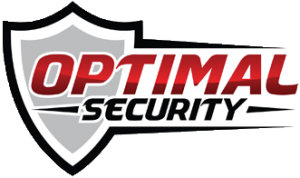What cost factors are associated with fire protection and safety systems?
Fires are a serious threat for any workplace, making the need fora comprehensive form of fire protection essential. The cost factors associated with fire suppression systems largely depend on the industry and size of the facility.
Cost Factor #1: Size of the Facility
The overall size of the building will greatly influence the cost of the installation. In general, large buildings will require more expensive installation. For example, a larger facility with several floors and more space will require more sensors and equipment. This will cost more.
Cost Factor #2: Type of Equipment
One has to account for the costs of fire detection, fire alarm, and sprinkler systems along with water valve hooks from nearby fire departments and other fire safety measures. The cost of equipment also varies based on the following factors:
Pipe Material: Plastic is more affordable. It can be used whenever possible to minimize installation costs.
System features: Most workplaces will use a water supply from the municipal system. Systems that run on antifreeze solutions will require the installation of a backflow preventer. If the office space receives its water from a private water resource, the sprinkler system may require a water storage tank and boosterpump. This will add to the overall cost of installation.
Here is a quick breakdown of the most common components used in fire protection and safety systems.
Carbon monoxide detectors: They are used to monitor the level of carbon monoxide in the air. They are available from $15 to $200 per unit.
Fire Escape Ladders: Every exit in the facility can benefit froman escape ladder secured to the wall. This ladder can cost anywhere from $500 to $1500, with an additional $100 to $300 installation charges.
Smoke detectors: They come in a variety of makes and models,ranging from $10 to $65 per model.
Flame detectors: They alert security personnel in the case of larger fires or explosions (common in references and oil rigs). They can cost anywhere from $2000 to $4000.
Sprinkler systems: They can play an important role in the timelyprevention of damage to property and death. Depending on the facility's requirements, they can cost anywhere from $2 to $12 per square foot.
Cost Factor #3: Ongoing Monitoring
In addition to the insulation costs, the manager will also have to consider the cost of alarm monitoring. These can range from $50 to $100 per month. The services needed will depend on the equipment that is to be monitored and the type of monitoring.
How can the risk management option of transferring risk offset liabilities?
Risk transfer is a popular risk management tool that allows a firm to shift the loss from an undesirable outcome to a third party. This third party is compensated with periodic payments.
Insurance is a common example of risk transfer. For example, a security guard who buys professional liability insurance isinsuring themselves against adverse outcomes associated with the call of duty. As such, the security guard or company is shirting the risk of having to incur significant financial losses due to a professional mistake to an insurance company.
In exchange for bearing this type of risk, the insurance company will require monthly payments from the security guard.
A big advantage of risk transfer is that it protects the individualor entity from unforeseen financial risk in the form of damage, losses, theft, and professional mistakes. A key drawback of risk transfer is the level of expense that the entity has to bear for buying and maintaining the insurance. In addition, claiming insurance can be time-consuming and is a discouraging factor of availing risk transfer.
